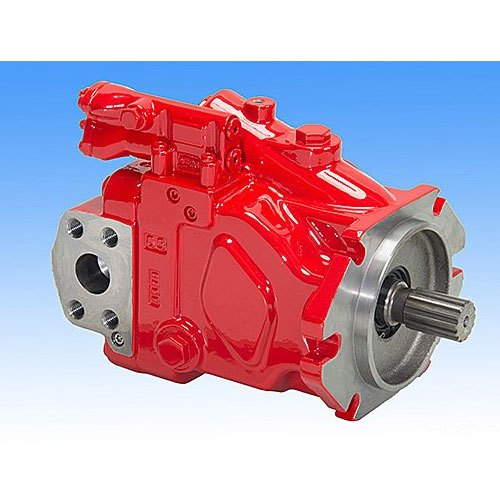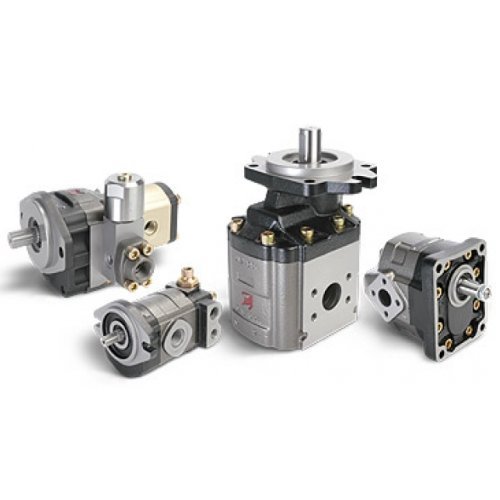Hydraulic pumps are important tools in any construction site, and they need to be primed before they can start moving fluids. Priming a hydraulic pump involves injecting fluid into the engine so that it can start up and produce pressure. In most cases, priming is required because hydraulic fluids have a low viscosity and require a high starting pressure in order to flow freely. However, there are some exceptions to this rule, and you don’t usually have to prime hydraulic pumps when using them in construction sites.
Some hydraulic pumps are self-priming, which means that they can start up without needing to be primed. If you’re using a self-priming pump, it’s important to keep an eye on the fluid level in the reservoir so that it doesn’t get too low. If the fluid level falls too low, the pump may not be able to start up and you’ll have to prime it.
What is a Hydraulic Pump?
A hydraulic pump is a machine that uses hydraulics to move fluid. The most common application of a hydraulic pump is in the automotive and manufacturing industries, where they are used to power tools, machines, and other equipment. They can also be found in water systems, oilfields, and other areas where liquid must be moved.
A hydraulic pump works by using pressurized fluid to move objects or fluids. This is done by using pistons to push and pull the fluid through the pump. The pressure generated by the pistons causes the fluid to move forward.
There are several different types of hydraulic pumps, but all work on the same principle. A hydraulic motor converts energy from an external source (like a battery) into rotational motion, which is then used to power the pump’s pistons. This movement causes the pistons to push and pull the fluid through the pump’s system.
The main difference between some of these pumps is their ability to handle a high amount of pressurized fluid. Some pumps can handle up to 400 bar (4,000 psi), while others are designed for lower pressures (like those used in cars).
While there are many different types of hydraulic pumps available on the market

Types of Hydraulic Pumps
There are many types of hydraulic pumps, but all of them use some form of pressure to move fluid. The three most common types are prime-mover pumps, pressure pumps, and centrifugal pumps.
Prime-mover pumps use a motor to turn a shaft, which in turn powers the pump. They’re used most often in industrial settings, where they need to move large amounts of fluid quickly. Pressure pumps use atmospheric pressure to power the pump, which makes them popular for applications like water Treatment plants. Centrifugal pumps are the simplest type of pump and are used most often in home and small business settings. They work by spinning a rotor inside a chamber that is filled with fluid. This movement causes the fluid to be forced out the other end.
There are many different types of prime-mover pumps and pressure pumps, but all three types use some form of pressure to move fluid.
What are pumps?
Pumps are devices that use pressure to move fluid. They are used in a variety of applications, including hydraulics, water treatment and agricultural irrigation.
Pumps can be either hydraulic or mechanical. Hydraulic pumps are powered by pressurized water; mechanical pumps use gears or a motor to turn a piston.
The most common type of pump is the centrifugal pump, which uses spinning impellers to move liquid. Centrifugal pumps are used in industrial applications, such as mining and manufacturing, because they are efficient and can handle large amounts of liquid.
Other types of pumps include the double-action pump and the single-action pump. The double-action pump works similarly to a plunger; when you push down on the plunger, it creates a vacuum that pulls up on the container below it. The single-action pump works in a similar way, but the plunger has only one action (it doesn’t have to be pushed down).
There are several factors to consider when selecting a pump: the type of fluid being pumped, the size of the pump, the required strength and pressure, and the cost.
Why do you Prime pumps?
Prime pumps are essential for a variety of applications where hydraulic pressure is important, such as oil and gas production, wastewater treatment, mining, and construction. Without prime pumping, the pressure in the system can become too high which can damage the equipment or cause malfunctions. Prime pumping also helps to keep the fluid flow rates consistent, preventing cavitation and other fluid dynamics problems.
Prime pumps are available in both manual and automatic types. Manual prime pumps use a hand crank to produce the pressure needed, while automatic prime pumps use an electric motor to create the pressure.
How to Prime a Hydraulic Pump
Do you have to prime a hydraulic pump?
This is a question that often comes up when someone is trying to figure out how to use a hydraulic pump. The short answer is no, you do not have to prime the pump in order to use it. In fact, priming the pump can actually lead to decreased efficiency and poor performance.
There are several reasons why priming a hydraulic pump can be detrimental. Priming causes the oil in the hydraulic system to reach temperatures above its flash point. This can create damaging vapors and fluids, which can damage both the pump and machinery it’s used on. Additionally, priming also forces the oil into tiny air pockets, which can lead to clogging and jamming.
So, while priming may not be necessary for normal operation of a hydraulic system, it’s definitely not recommended that you prime your pump unnecessarily.

What makes a hydraulic pump prime?
Prime hydraulic pumps are designed to provide optimal performance and reliability. They’re able to withstand high levels of pressure and heat, making them ideal for industrial applications. Here’s what you need to know about prime pumps and why they’re important:
1. What makes a prime pump special?
Priming a hydraulic pump means ensuring that the cylinder is filled with oil before the motor begins operation. This helps to prevent damage and ensure consistent performance. Prime pumps also tend to produce less noise and require less maintenance than non-prime pumps.
2. Why are they important?
Priming a hydraulic pump ensures that the cylinder is filled with oil before the motor begins operation, which helps to prevent damage and ensure consistent performance. Prime pumps also tend to produce less noise and require less maintenance than non-prime pumps.
What are the items you need when priming a hydraulic pump?
Before you can prime a hydraulic pump, you will need the following items: a priming valve, a hydraulic oil, and a pressure gauge. The priming valve is used to open the flow of hydraulic fluid to the pump, and the oil is used to help lubricate the gears inside the pump. The pressure gauge is used to measure the pressure in the system.
Conclusion
No, you do not have to prime hydraulic pumps. However, if the pump has been sitting idle for an extended period of time (more than 24 hours), it may be necessary toprime the pump in order to ensure its proper function. To prime the pump, turn it off and allow it to cool before turning it back on.
Priming a hydraulic pump is not necessary for normal operation, and can actually lead to decreased efficiency and poor performance. Keep an eye on the fluid level in the reservoir to avoid problems.
Do you have to Prime hydraulic pumps,please click topkitparts see more
